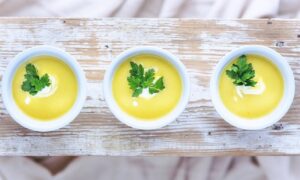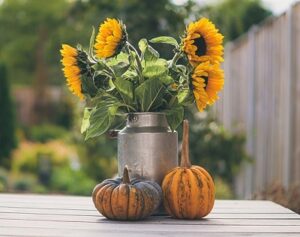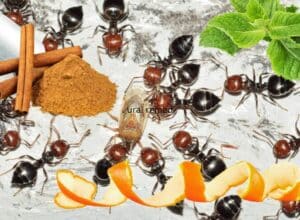Last Updated on October 17, 2023
Key Takeaways:
In a nutshell, how you harvest your dill will depend on the dill variety you grow.
In tall, seed producing dill cultivars (like Long Island and Mammoth that can reach 5 feet in height) – you will snip fronds off the stem for everyday cooking or cut a whole plant above the ground (stem, fronds and a flowering head) for dill pickles.
In dill varieties, like Fernleaf and Dukat that produce plenty of tasty foliage and few seeds – you will cut dill sprigs.
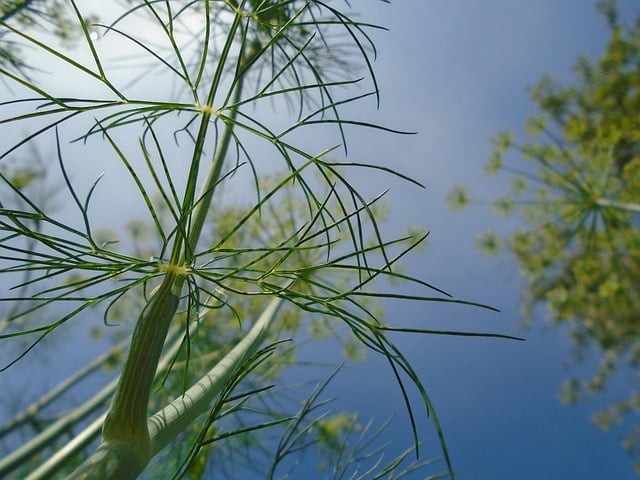
*This post contains affiliate links. If you choose to purchase any of the products I have recommended, I may receive a commission at no cost to you.
Dill is a favorite herb among many cooks. It has a light, delicate flavor that adds depth to salads and sauces alike.
But dill can be hard to find in the grocery store since it’s not always in season.
Additionally, the best time to harvest fresh dill is when it’s needed, because the plant can’t be kept for long before wilting.
So it makes perfect sense to grow your own dill weed and pick some flavorful foliage for your cooking needs when necessary.
But when should you start harvesting dill and how to harvest dill exactly?
Follow the easy steps described in this article and you’ll have thriving dill plants and plenty of fresh dill herb on hand throughout the season for all your needs.
What part of the dill plant do you use?
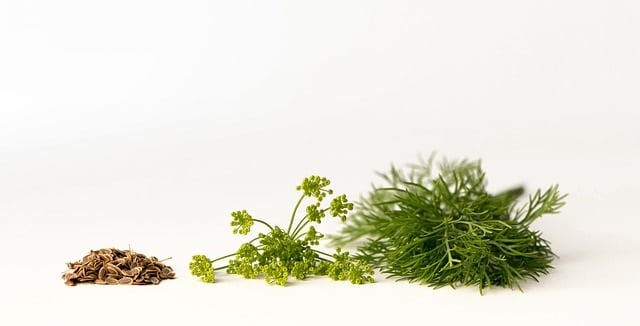
You can use dill foliage, dill heads with flowers, and dill seeds.
Dill foliage is harvested for everyday cooking. You can add dill leaves to sauces, stews, soups, salads, dips, spreads, even bread.
Dill foliage is harvested in the form of sprigs or fronds.
Whole flowering dill plant (without a root) – stem, foliage and head of dill is used in pickling.
Dill seeds (whole or crushed) are used to add flavor to dishes. They can be added to breads, soups, vegetable dishes, salad dressings and pickles. Vinegar and oil can be infused with dill seeds too. Some people even make herbal tea with dill seeds.
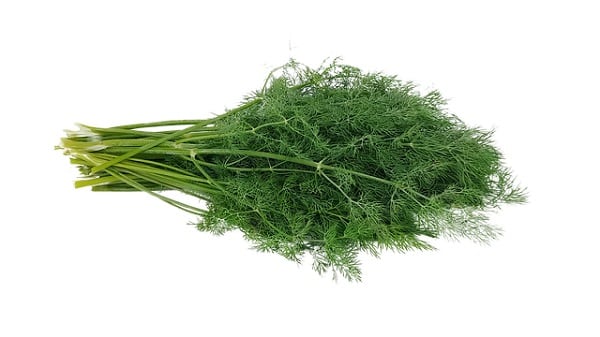
Dill sprigs. You can get fresh organic dill delivered by Amazon Fresh or grow your own dill from seeds.
What is a dill sprig?
Sprig is a single stem with foliage of a fresh herb (about 4-5 inches long).
What is a frond?
Frond is the leaf or leaflike part of a plant.
What is dill weed?
Dill weed refers to the leaves and the stem part of a dill plant (without a flower or seed head) like you would usually buy at the supermarket.
How to harvest dill foliage: step-by-step instructions
1. Begin harvesting dill 8 to 10 weeks after sowing outdoors.
2. Pick fresh leaves (fronds) of the stem of tall seed producing dill varieties.
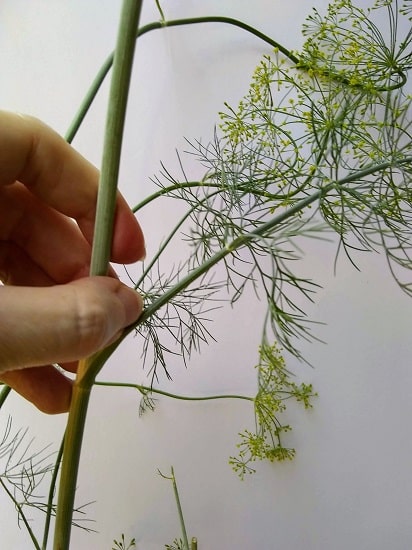
To harvest – hold the dill’s stem with one hand close to the place where the frond you want to harvest grows, and snip the frond off where it meets the stem with your other hand. This will ensure that you don’t pull the whole plant while harvesting dill. You can use scissors instead of your hand if you prefer.
The best way to harvest compact dill varieties (Fernleaf, Dukat) that are slow to bolt and grow the branches (sprigs) from the base is by cutting sprigs with garden scissors or micro-tip pruners 0.5-1 inch off the ground.
3. When the dill flowers start to form seeds, it’s time to harvest all the foliage.
4. Put sprigs in a jar with water, cover with a plastic bag and store in the fridge for later use. Or refrigerate fresh foliage wrapped in a paper or cloth towel and placed in a plastic bag.
Alternatively, you can chop and freeze dill in a convenient Soupercube (2 tablespoons silicone tray with lid) to preserve flavor. Learn about all ways to freeze dill in my article.
5. Prior to using your dill make sure you wash it thoroughly under cold water to remove any dirt or insects found on the plant.
When to harvest dill for the best taste?
Dill tastes best when it starts to flower.
7 tips on how to grow dill for continuous foliage supply
- If you use a lot of dill for cooking, choose slow bolting types of dill plants like Fernleaf or Ducat that create very little seeds, so you can harvest dill sprigs over an extended period.
- To produce a lot of foliage when planting dill, broadcast seeds in bands and thin seedlings to just few inches apart
- Sow every two to 3 weeks for continuous harvest
- Pinch off any flower heads in the bud stage if you do not need seeds, this will encourage dill plants to put out more foliage and create stronger bushier plants.
- Pinch off spent flowers to help prevent prolific self-sowing.
- At the end of the season though, leave some heads to go to seeds and self sow to provide you with an early dill crop next year. If you let the dill sow itself, it will come back year after year.
- You can grow dill all year long indoors in your AeroGarden or outside in cold frames or greenhouse.
How to harvest dill seeds
- When the flower heads have faded and started to dry, your dill seeds are ready to harvest.
- Clip the flower heads with pruners or garden scissors.
- Place dill weed heads in paper bags and give them a good shake. The seeds will fall off to the bottom of the bag.
- Discard the heads and store dill seeds in an airtight container to use for recipes or for the next spring planting.
Related reading:
Final thoughts on how to harvest dill
Dill can be grown and harvested in your garden with a little bit of space. It’s enough to plant dill just once, let itself sow, then harvest all the supplies you need throughout the year!
I hope you’ve learned all the needed tips and tricks on how to grow dill for a bountiful supply and got all the necessary information on how to harvest dill without killing the plant.
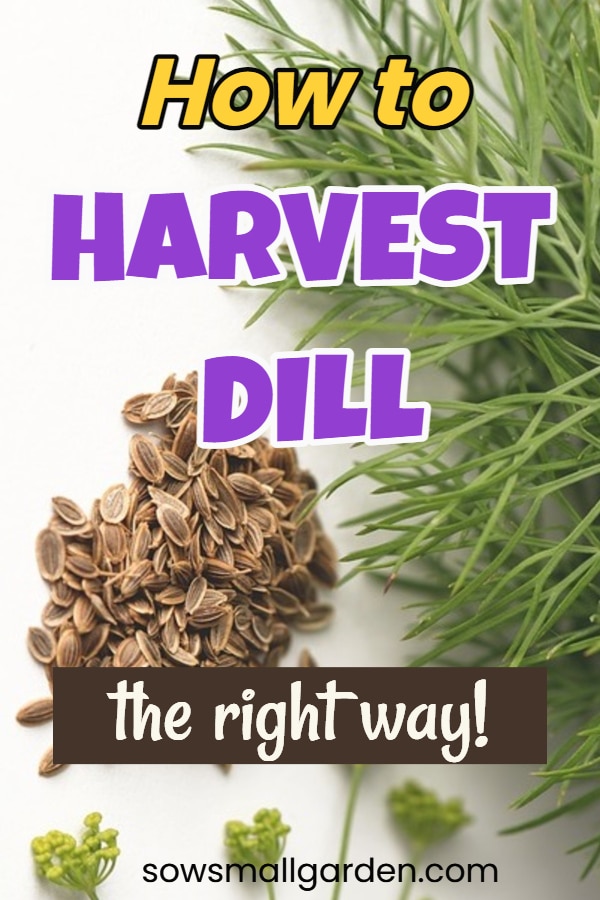
Pin for later reference!
You have read:


